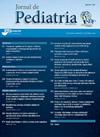微塑料:隐藏的危险。
IF 2.8
4区 医学
Q1 PEDIATRICS
引用次数: 0
摘要
目标:评估微塑料/纳米塑料(MiP/NP)对人类健康的影响:评估微塑料/纳米塑料(MiP/NP)对人类健康的影响:作者对过去十年中在以下数据库中以英文、葡萄牙文、法文和西班牙文发表的文章进行了叙述性综述:PubMed、Google Scholar、EMBASE 和 SciELO:PubMed、Google Scholar、EMBASE 和 SciELO。搜索关键词为:微塑料或纳米塑料或海洋垃圾或毒理学或添加剂和人类健康或儿童或成人:微塑料是一组新出现的污染物,由于在所有环境中无处不在,在过去十年中引起了越来越多的科学兴趣和社会关注。人类主要通过口服、吸入、皮肤接触以及全身途径接触 MiP 和 NP,尤其是对幼儿而言,这些接触途径不容忽视。在不同系统中可能产生的毒性效应是由塑料微粒造成的,这些微粒通常与可浸出添加剂和吸附污染物结合在一起:除非在未来二十年内改变塑料价值链,否则物种、海洋生态系统、气候、健康、经济和社区所面临的风险将变得不可收拾。然而,在这些风险的同时,也蕴含着引领世界向更可持续发展过渡的独特机遇。本文章由计算机程序翻译,如有差异,请以英文原文为准。
Microplastics: the hidden danger
Objective
To assess the impact of microplastics/nanoplastics (MiP/NP) on human health.
Data source
The authors conducted a narrative review of articles published in English, Portuguese, French and Spanish in the last decade in the following databases: PubMed, Google Scholar, EMBASE and SciELO. The keywords used in this search were: microplastics OR nanoplastics OR marine litter OR toxicology OR additives AND human health OR children OR adults.
Data synthesis
MiP is a group of emerging contaminants that have attracted increasing scientific interest and attention from society in the last decade due to their ubiquitous detection in all environments. Humans can be mainly exposed to MiP and NP orally, by inhalation, by dermal contact, as well as through systemic routes and cannot be neglected, especially in young children. The possible toxic effects in different systems are due to plastic particles, often combined with leachable additives and adsorbed contaminants.
Conclusions
Unless the plastics value chain is transformed in the next two decades, the risks to species, marine ecosystems, climate, health, economies and communities will become unmanageable. However, alongside these risks lie unique opportunities to lead the transition to a more sustainable world.
求助全文
通过发布文献求助,成功后即可免费获取论文全文。
去求助
来源期刊

Jornal de pediatria
医学-小儿科
CiteScore
5.60
自引率
3.00%
发文量
93
审稿时长
43 days
期刊介绍:
Jornal de Pediatria is a bimonthly publication of the Brazilian Society of Pediatrics (Sociedade Brasileira de Pediatria, SBP). It has been published without interruption since 1934. Jornal de Pediatria publishes original articles and review articles covering various areas in the field of pediatrics. By publishing relevant scientific contributions, Jornal de Pediatria aims at improving the standards of pediatrics and of the healthcare provided for children and adolescents in general, as well to foster debate about health.
 求助内容:
求助内容: 应助结果提醒方式:
应助结果提醒方式:


